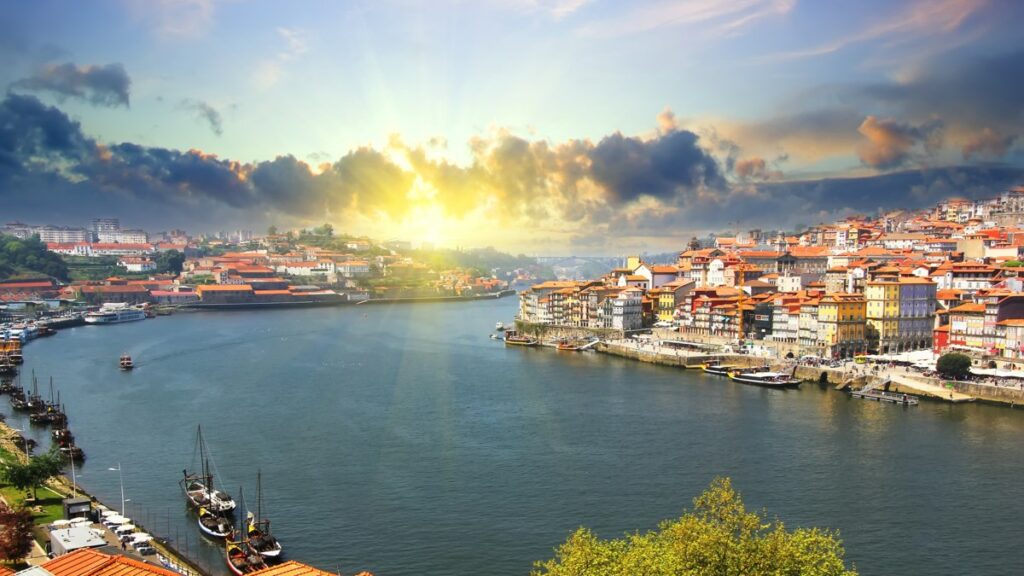The Douro River: A Tapestry of History, Culture, and Natural Splendor

Flowing majestically through the rugged landscapes of Spain and Portugal, the Douro River stands as a testament to the region’s rich heritage, cultural diversity, and natural beauty. Stretching over 500 miles (800 kilometers), the Douro winds its way through terraced vineyards, historic cities, and breathtaking scenery, leaving an indelible mark on the regions it traverses.
Geographical and Historical Significance: The Douro River originates in the Spanish province of Soria, near the town of Duruelo de la Sierra, and meanders southwestward through the mountainous terrain of northern Spain. It crosses the border into Portugal near the city of Miranda do Douro and continues its course through the Douro Valley, passing through major cities such as Porto and Vila Nova de Gaia before emptying into the Atlantic Ocean near the city of Porto.
Throughout history, the Douro has been a vital lifeline for the peoples of Spain and Portugal, serving as a source of water, transportation, and sustenance. In ancient times, it formed the western boundary of the Roman Empire and witnessed the rise and fall of medieval kingdoms and empires. The riverbanks are dotted with historic towns, vineyards, and quintas (wine estates), each bearing witness to the rich tapestry of Iberian history and civilization.
Cultural and Artistic Legacy: The Douro has inspired generations of artists, writers, and musicians with its timeless beauty and romantic allure. From the soulful melodies of fado to the vibrant colors of azulejos (painted ceramic tiles), the river has been a source of inspiration for countless works of art and literature. Painters such as José Malhoa and Amadeo de Souza-Cardoso captured its scenic vistas and vibrant landscapes in their masterpieces, while writers like Miguel Torga and José Saramago chronicled their journeys along its banks in their novels and poems.
The cities and towns along the Douro are home to a wealth of cultural treasures, from the medieval churches of Lamego and Amarante to the baroque palaces of Porto and Braga. The region’s architectural heritage reflects the diverse influences of Roman, Moorish, and Gothic civilizations, creating a unique blend of styles and traditions that is truly emblematic of Iberian culture.
Economic Importance: The Douro River is not only a cultural icon but also a vital economic artery for Spain and Portugal. Its navigable waters facilitate the transportation of goods and commodities, including port wine, olive oil, and cork, supporting industries such as viticulture, agriculture, and forestry. Ports along the river, such as Porto and Peso da Régua, are major hubs for domestic and international trade, handling millions of tons of cargo each year.
The Douro also plays a crucial role in the region’s tourism industry, attracting millions of visitors each year with its scenic beauty, historic landmarks, and vibrant cultural scene. River cruises offer travelers a leisurely way to explore the river’s many attractions, from the vineyard-covered hills of the Douro Valley to the medieval villages of the Alto Douro Wine Region.
Environmental Conservation and Sustainability: In recent years, efforts have been made to protect and preserve the ecological health of the Douro River and its surrounding habitats. Initiatives to reduce pollution, restore wetlands, and promote sustainable viticulture aim to ensure that future generations can continue to enjoy the river’s natural beauty and resources.
From hiking and cycling along its scenic riverbanks to wine tasting and boat tours along its tranquil waters, the Douro offers endless opportunities for outdoor recreation and exploration. Whether exploring historic landmarks, sampling local cuisine, or simply soaking in the breathtaking views, visitors to the Douro region are sure to be captivated by its timeless charm and allure.
Conclusion: In conclusion, the Douro River stands as a symbol of Spain and Portugal’s natural beauty, cultural richness, and historical significance. From its source in the mountains of Spain to its delta in the Atlantic Ocean, the river’s journey reflects the enduring spirit of the Iberian peoples and the timeless rhythms of the natural world. As we navigate the challenges of the 21st century, the Douro remains a source of inspiration, fascination, and pride for all who encounter its majestic waters.




